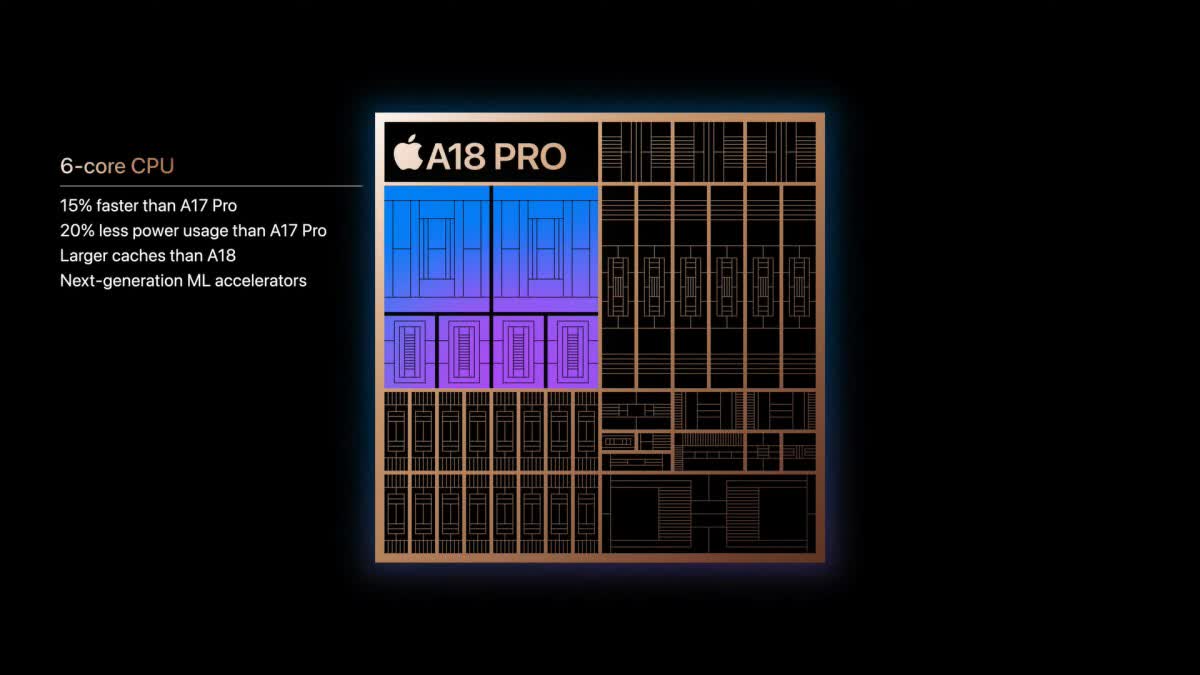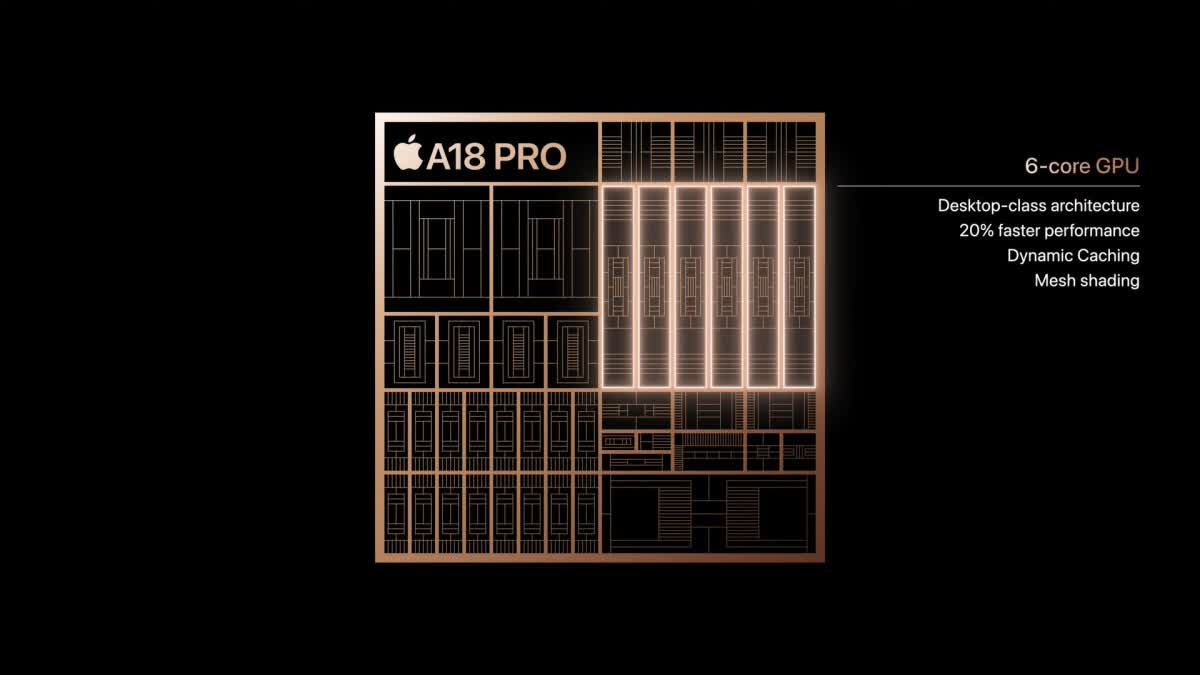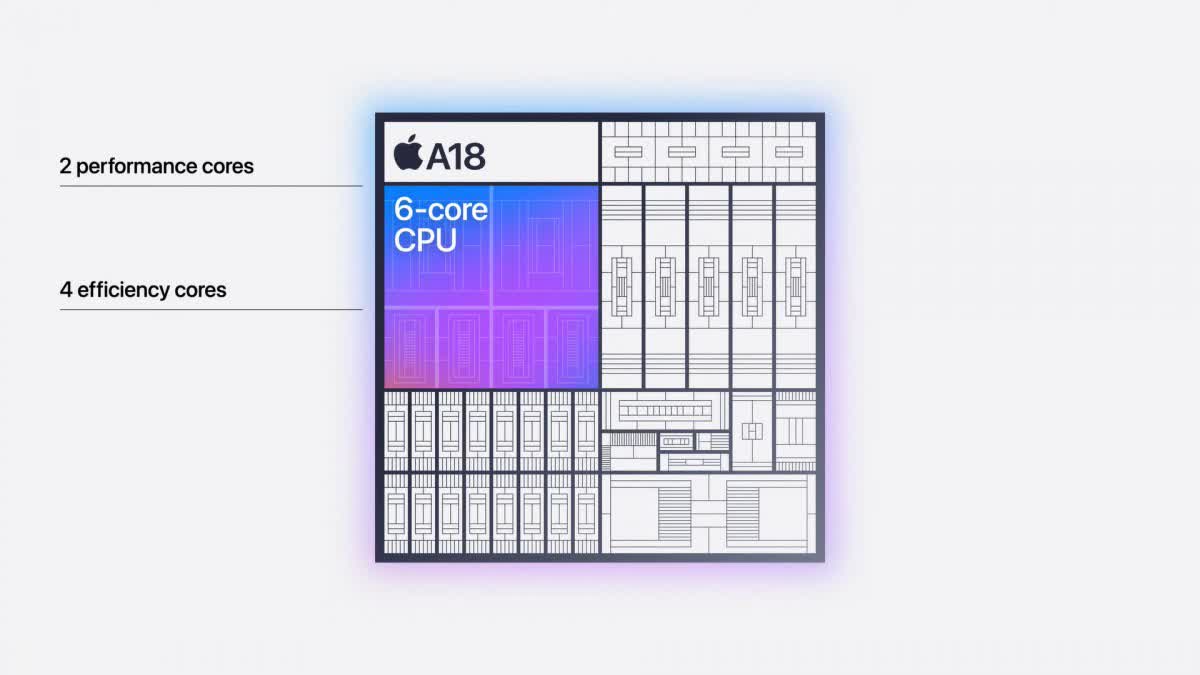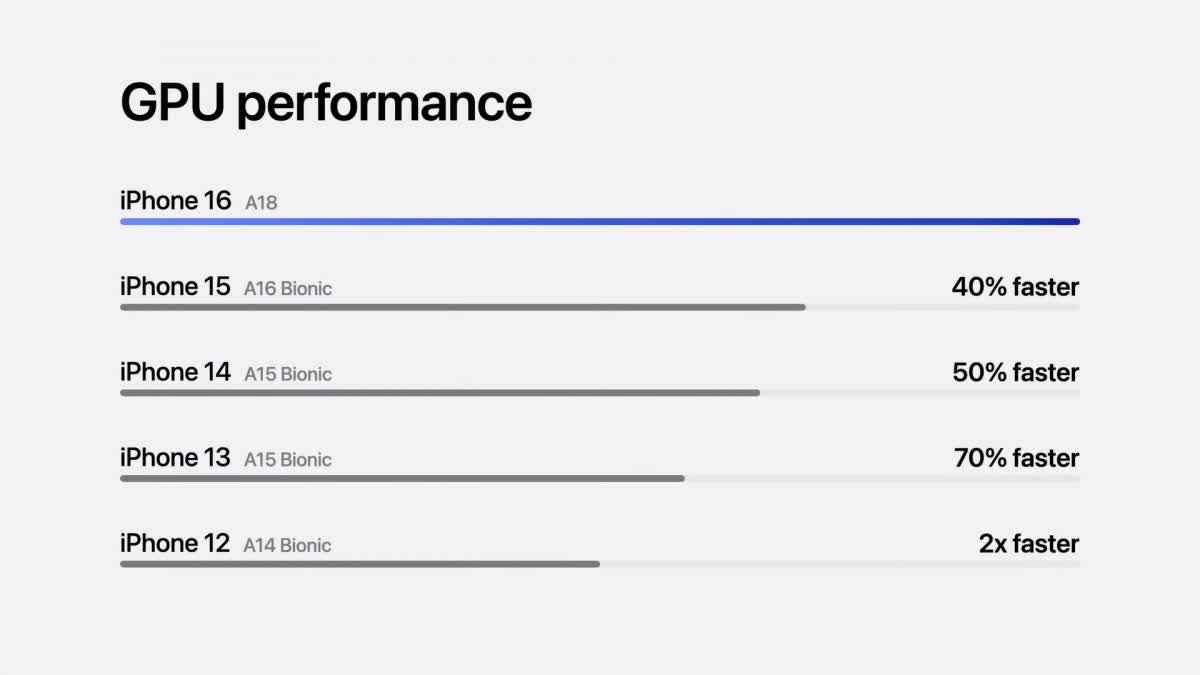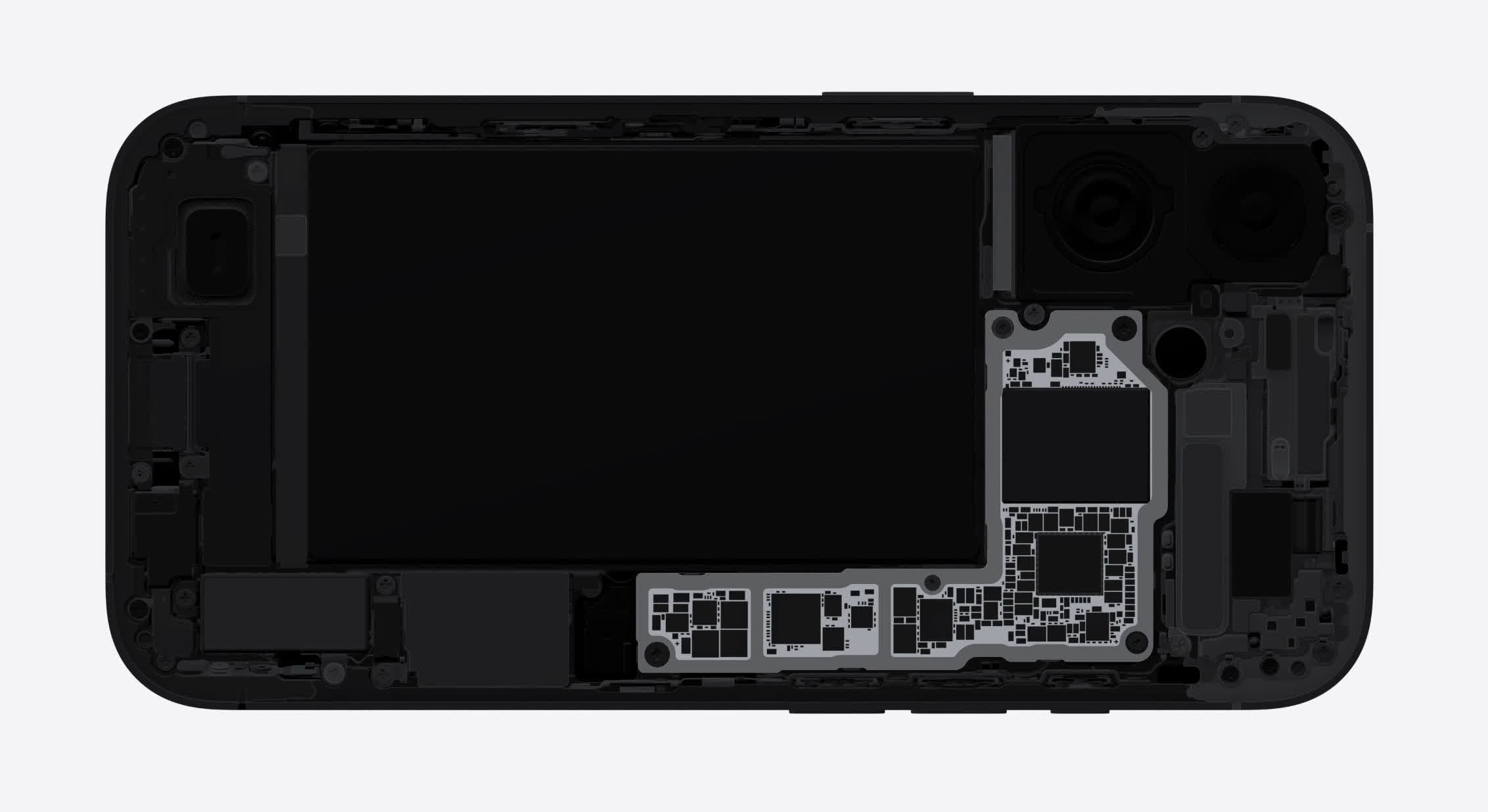In brief: The iPhone 16 series is finally here, and with it comes two new powerhouse chipsets – the A18 and the A18 Pro, which Apple claims bring generational leaps in performance and efficiency. The non-Pro variant is particularly interesting since the improvements are significant over the non-Pro iPhone 15 models.
Let's dive into the A18 Pro first – the chip that powers the iPhone 16 Pro and 16 Pro Max models. Built on a 3nm process, it packs a 6-core CPU setup with two performance cores and four efficiency ones. It promises a 15% performance uplift over last year's A17 Pro while simultaneously reducing power consumption by 20%.
Meanwhile, the GPU is 20% faster than the predecessor with 2x speedier ray-tracing, thanks to its desktop-class architecture. The NPU is twice as fast as the one on the A17 Pro, with 16 cores capable of 35 trillion operations per second.
Elsewhere, the A18 Pro's image signal processor (ISP) gets a huge 2x video encoding uplift. It also features wider memory bandwidth and large cache, enabling support for some "Advanced media" features, including always-on display and ProRes video recording.
Moving on to the standard A18 chip, while it's a slimmed-down version of the Pro, it still represents a serious upgrade for Apple's mainstream iPhone 16 and 16 Plus models. It features 30% faster CPU performance and 40% zippier graphics processing compared to last year's A16, while also being 30% more efficient.
The wider-than-usual performance gap is partly due to the iPhone 15 models skipped the A17 upgrade. That means the comparison is against a chip that's two generations behind.
Under the hood, the A18 rocks the same 6-core CPU blueprint as the Pro variant. But it cuts a couple of corners on the GPU front with 5 cores instead of 6, though that doesn't mean reduced performance. The neural engine appears to be unchanged compared to the Pro, meaning that AI workloads should still see significant gains. It's worth noting that the iPhone 16 and 16 Plus are the first non-Pro models with support for Apple Intelligence.
One cool new addition on the non-Pro side is better thermals, allowing the iPhone 16 series to better sustain peak performance during intense gaming sessions. Ray tracing also makes its mainstream iPhone debut, bringing more realistic visuals.
As usual, Apple was light on finer chipset details like CPU/GPU clock speeds and memory configurations.
